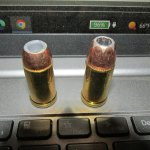BillBro
Member
Are they pretty much all the same or is there one that sort of stands out as the go-to?
Is the Redding profile crimp die the same thing and is it worth the extra $?
Not liking the Hornady seating/crimping die. I always do them seperately anyway so using a seperate die wont be a big deal but I just dont like the crimp and it seems kinda rough on the case mouth too.
Is the Redding profile crimp die the same thing and is it worth the extra $?
Not liking the Hornady seating/crimping die. I always do them seperately anyway so using a seperate die wont be a big deal but I just dont like the crimp and it seems kinda rough on the case mouth too.

